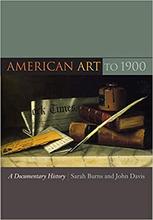More about Cecilia Beaux
- All
- Info
- Shop
Works by Cecilia Beaux

Contributor
Meet Cecilia Beaux, the savviest portrait artist to walk the Philly streets.
Beaux was a formidable female raised by a family full of them. When Cecilia’s widowed father went AWOL, jumping ship for a child-free life in France, she and her sister were left in the care of their grandmother and aunts. Beaux’s artistic pursuits were a long time coming. This was the Victorian era, after all: women were expected to don unwieldy petticoats and repress their sexuality, not enter the workforce. Beaux’s passion for artists like Rembrandt started her out on a path to fame and fortune, beginning with early employment as a scientific illustrator. Though Cecilia’s newfound career prospects gave her an excuse to ward off her countless marriage proposals, painstakingly drawing fossils reportedly hurt her solar plexus.
Luckily, Beaux’s abdominal woes were short-lived. She received an education at the Pennsylvania Academy of the Fine Arts, home of Thomas Eakins, who was fired after teaching a shocking curriculum of anatomy to the impressionable young ladies under his charge. At the time, live models and anatomy lessons were off-limits to academy women. After her time at PAFA, Beaux spurned a slew of lovesick suitors and moved to Europe. There, she studied under William-Adolphe Bouguereau. She was well on her way to a lifetime of being constantly compared to John Singer Sargent and Mary Cassatt.
Despite living in the bustling metropolis of Paris, Beaux did not descend into the life of sin and depravity forewarned by her Aunt Eliza. Instead, she matured into a capable portraitist with clients ranging from Georges Clemenceau to Edith Roosevelt. In 1895, she was hired as a PAFA instructor, a position that had never been filled by a woman. Seven years later, she sketched Teddy Roosevelt. Beaux’s career perhaps culminated when Eleanor Roosevelt declared her the most influential female American cultural icon, a title accompanied by the Chi Omega gold medal. Her only slip up? Old school painter Cecilia was convinced that the modernists would fade into obscurity.
Sources
- “Cecilia Beaux.” National Museum of Women in the Arts. 2018. Accessed July 31, 2018. https://nmwa.org/explore/artist-profiles/cecilia-beaux.
- “Cecilia Beaux.” Wikipedia. July 30, 2018. Accessed July 31, 2018. https://en.wikipedia.org/wiki/Cecilia_Beaux.
- Hughes, Kathryn. “Gender Roles in the 19th Century.” May 15, 2014. British Library. Accessed July 31, 2018. https://www.bl.uk/romantics-and-victorians/articles/gender-roles-in-the….
- Kuiper, Kathleen. “Cecilia Beaux.” Encyclopedia Britannica. September 14, 2001. Accessed July 31, 2018. https://www.britannica.com/biography/Cecilia-Beaux.
Featured Content
Here is what Wikipedia says about Cecilia Beaux
Eliza Cecilia Beaux (May 1, 1855 – September 17, 1942) was an American artist and the first woman to teach art at the Pennsylvania Academy of the Fine Arts. Known for her elegant and sensitive portraits of friends, relatives, and Gilded Age patrons, Beaux painted many famous subjects including First Lady Edith Roosevelt, Admiral Sir David Beatty and Georges Clemenceau.
Beaux was trained in Philadelphia and went on to study in Paris where she was influenced by academic artists Tony Robert-Fleury and William-Adolphe Bouguereau as well as the work of Édouard Manet and Edgar Degas. Her style was compared to that of John Singer Sargent; at one exhibition, Bernard Berenson joked that her paintings were the best Sargents in the room. Like her instructor William Sartain, she believed there was a connection between physical characteristics and behavioral traits.
Beaux was awarded a gold medal for lifetime achievement by the National Institute of Arts and Letters, and honored by Eleanor Roosevelt as "the American woman who had made the greatest contribution to the culture of the world".
Check out the full Wikipedia article about Cecilia Beaux














